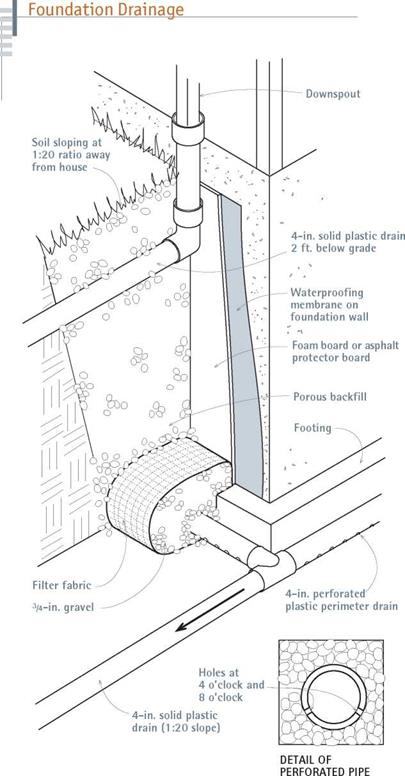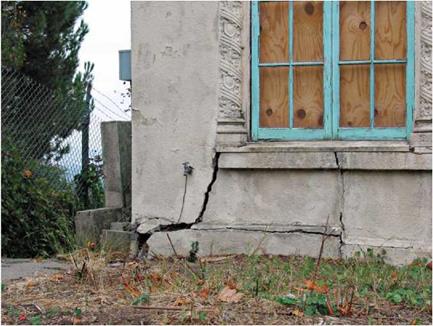INDOOR SYMPTOMS OF FOUNDATION FAILINGS

 |
||
Most foundations that fail were poorly designed, poorly constructed, or subjected to changes— especially hydrostatic pressure or soil movement —that exceeded their load-bearing capacities. Exact causes are often elusive.


![]() for a span or by a failed or absent girder. If an existing girder seems sound, adding posts or new pads may fix the problem. Otherwise, add a girder to reduce the distance joists span.
for a span or by a failed or absent girder. If an existing girder seems sound, adding posts or new pads may fix the problem. Otherwise, add a girder to reduce the distance joists span.
Flooring that crowns above a girder, sloping downward toward the outside walls; doors and windows that are difficult to open; and cracking at the corners of openings are often caused by a failure of all or part of the perimeter foundation.
Foundation cracks often signal foundation failure. Cracks may range from short surface cracks to through-the-wall cracks that should be examined by a structural engineer. Here are some common symptoms and remedies:
► Narrow vertical or diagonal surface cracks with aligned sides are likely caused by foundation settlement or soil movement but are probably not serious. If water runs from cracks after a storm, fill cracks with an epoxy cement, and then apply a sealant.
► Wide cracks in foundations less than 2 ft. tall indicate little or no steel reinforcement, a common failing of older homes in temperate climates.
► Large, /і-in. or wider, vertical cracks through the foundation that are wider at the top usually mean that one end of the foundation is sinking—typically at a corner with poor drainage or a missing downspout.
► Large vertical cracks through the foundation that are wider at the bottom are usually caused by footings that are too small
for the load. You may need to replace or reinforce failed sections.
► Horizontal cracks though a concrete foundation midway up the wall, with the wall bowing in, are most often caused by lateral pressure from water-soaked soil. This condition is common to uphill walls on sloping lots.
► Concrete-block walls with horizontal cracks that bulge inward are particularly at risk because block walls are rarely reinforced with steel. If walls bulge more than / in. from vertical and there’s a chronic water problem, foundation failure may be imminent.
► In cold climates, horizontal cracks through the foundation, just below ground level, are usually caused by adfreezing, in which damp soil freezes to the top of the foundation and lifts it. If these cracks are accompanied by buckled basement floors, the foundation’s footings may not be below the frost line for your region.
Gaps between the chimney and the house are usually caused by an undersize chimney pad. If the mortar joints are eroded, too, tear the chimney down and replace it.






Leave a reply